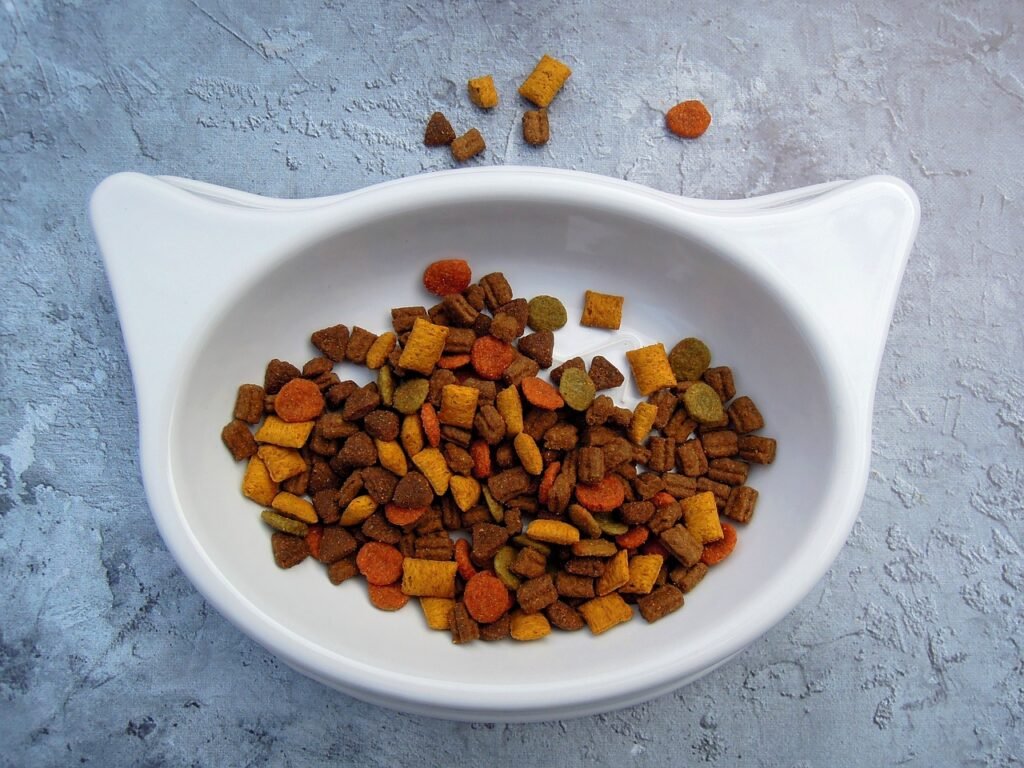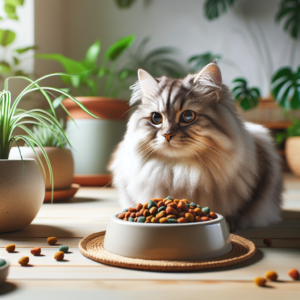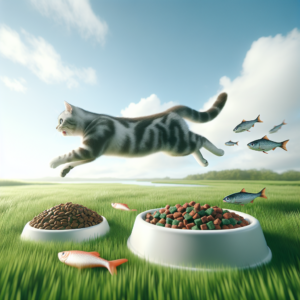
The choice between wet and dry cat food is a common dilemma for cat owners. Both types of food have their advocates and detractors, and the decision can significantly impact the health and well-being of your feline friend. Understanding the nutritional differences, benefits, and potential drawbacks of each can help you make an informed decision tailored to your cat’s needs. This article dives into the wet vs. dry cat food debate, exploring the nuances of each to guide you toward the best choice for your pet.
Understanding Cat Nutrition Basics
Cats are obligate carnivores, meaning they require a diet primarily composed of meat. Their bodies have evolved to metabolize protein and fat efficiently, but they have limited ability to digest carbohydrates. Essential nutrients for cats include taurine, arachidonic acid, vitamin A, and vitamin D, which they can only obtain from animal sources. A balanced diet should also provide adequate hydration, as cats have a low thirst drive and often do not drink enough water independently.
Wet Cat Food: Pros and Cons
Advantages of Wet Cat Food
Wet cat food typically contains higher moisture content, making it an excellent choice for hydration. This is particularly beneficial for cats with kidney issues or urinary tract problems, as increased water intake can help prevent or manage these conditions. The high protein content in wet food is often more aligned with a cat’s natural dietary needs.
Additionally, wet food tends to be more palatable for cats, thanks to its aromatic and flavorful nature. This can be advantageous for picky eaters or older cats with decreased appetite. The texture of wet food also mimics that of prey, which may encourage natural chewing behavior and improve dental health.
Drawbacks of Wet Cat Food
One of the primary drawbacks of wet cat food is its cost. It is generally more expensive than dry food, especially when providing a complete and balanced diet. Wet food also has a shorter shelf life once opened, requiring refrigeration and timely consumption to avoid spoilage.
Moreover, some cats may experience digestive issues with wet food, such as diarrhea, if their systems are not accustomed to it. The packaging, often in cans or pouches, can also be less environmentally friendly compared to the bulk packaging of dry food.
Dry Cat Food: Pros and Cons
Advantages of Dry Cat Food
Dry cat food is convenient and cost-effective, making it a popular choice for many cat owners. It has a longer shelf life and is easy to store, with minimal risk of spoilage. The crunchy texture of dry food can help promote dental health by reducing plaque and tartar buildup.
Dry food is also convenient for free-feeding, allowing cats to graze throughout the day without constant monitoring. This can be beneficial for busy owners or cats that prefer small, frequent meals.
Drawbacks of Dry Cat Food
Despite its convenience, dry cat food has some nutritional limitations. It typically contains higher levels of carbohydrates, which are not ideal for feline digestion. Some dry foods also include fillers and artificial preservatives that may not be beneficial for a cat’s health.
Additionally, the low moisture content in dry food can lead to dehydration if the cat does not supplement their water intake elsewhere. This can exacerbate kidney and urinary tract issues, particularly in older cats or those predisposed to such conditions.
Comparative Analysis: Nutritional Content
When comparing the nutritional content of wet and dry cat food, protein, fat, and carbohydrate levels are key factors. Wet food generally offers higher protein content and lower carbohydrates, aligning more closely with a cat’s natural dietary needs. However, this can vary significantly among brands, emphasizing the importance of reading labels and choosing high-quality products.
Dry food often includes added carbohydrates for structure and preservation. While some high-quality dry foods offer balanced nutrition, others may rely on grains and fillers, compromising the quality of the diet. Evaluating the ingredient list and guaranteed analysis on packaging can provide insight into the nutritional value of the product.
Health Considerations: Individual Needs of Cats
The choice between wet and dry cat food should consider the individual health needs of your cat. Cats with specific health issues, such as diabetes or obesity, might benefit from the low carbohydrate content of wet food. Conversely, cats with dental issues might find dry food beneficial due to its abrasive texture that can help clean teeth.
Hydration is another crucial factor. Cats with urinary tract problems or those prone to dehydration should have access to wet food to ensure they receive adequate moisture. However, some cats, especially those with certain gastrointestinal conditions, may have specific dietary needs that require consultation with a veterinarian.
Cost and Convenience
Cost and convenience are practical considerations in the wet vs. dry cat food debate. While wet food is often more expensive, it may be necessary for cats with specific dietary or health needs. Conversely, dry food offers a more economical option, with the added convenience of easy storage and feeding flexibility.
For many pet owners, a combination of both wet and dry food can strike a balance between cost, convenience, and nutritional value. This mixed feeding approach can offer variety and cater to the diverse preferences and needs of your cat.
Environmental Impact
The environmental impact of cat food production and packaging is an increasing concern for many pet owners. Wet food packaging often involves single-use cans and pouches, contributing to environmental waste. Dry food, typically packaged in larger, recyclable bags, may offer a more sustainable option.
Choosing brands that prioritize sustainable sourcing and environmentally friendly packaging can help mitigate the environmental impact of your cat’s diet. Researching companies’ environmental practices and opting for those with a commitment to sustainability can make a difference.
Conclusion: Finding the Right Balance
The wet vs. dry cat food debate is multifaceted, with valid arguments on both sides. The best choice ultimately depends on the individual needs of your cat, your lifestyle, and your budget. Understanding the nutritional differences and considering your cat’s health conditions, preferences, and hydration requirements can guide you in making an informed decision.
For many cat owners, a mixed feeding approach offers the best of both worlds, combining the benefits of wet and dry food to provide a balanced and varied diet. Consulting with a veterinarian can also provide personalized recommendations based on your cat’s specific health needs and dietary requirements.
Ultimately, the goal is to ensure your feline companion enjoys a nutritious, satisfying, and health-promoting diet, contributing to their overall well-being and longevity.
#ChatGPT assisted in the creation of this article.







